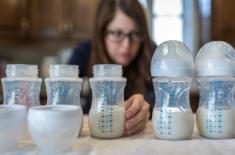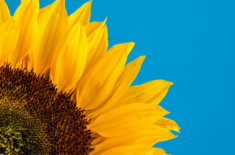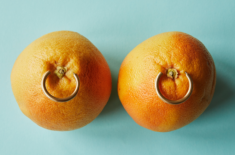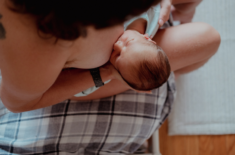Overview
Breastfeeding has plenty of benefits for you and your baby. It can reduce the risks of stress and postpartum depression while also helping your baby’s health and development. (1)(2)
However, studies show that around 80-90% of breastfeeding women experience nipple pain and fissures, leading many to quit nursing their babies. It’s estimated that 25-35% of new moms stop breastfeeding within the first week after birth due to nipple trauma. (3)(4)
You don’t have to let nipple cracks stop you from breastfeeding, mama. Often, it’s just a common and temporary problem encountered by nursing mothers.
For many moms, nipple cream is a lifesaver because it can help ease your pain while speeding up healing. But finding the right one might require some trial and error. Nevertheless, finding one that works for you can be a godsend on your breastfeeding journey.
Can you also use nipple cream to prevent your nipples from cracking? When should you start using it, how often you apply it, and is it safe to use while breastfeeding? Are there other options you can consider aside from commercial creams? Find out below.
How To Choose The Right Nipple Cream
Price
Prices vary, with some offered under $10 a tube while others are priced higher.
However, price shouldn’t be the deciding factor for products like this that come in close contact with your baby, especially while feeding. Often, non-toxic organic products can cost more, but they’re likely safer for you and your baby.
Still, you might also want to stick to one within your budget. You can choose from our recommendations below.
Ingredients
Certified Organic
Nipple creams made from natural, organic ingredients help put your mind at ease, knowing that these don’t have toxic chemicals.
Check the label. Try to pick non-GMO, USDA-certified organic creams. They’re also certified to be free from additives, preservatives, and pesticides.
Look for products made with coconut oil, which has antifungal properties that can help speed up healing and prevent infections. (5)
Lanolin
Many moms steer clear of lanolin because it can cause allergic reactions in some people with sensitive skin. (6)
However, HPA lanolin (highly purified anhydrous) is a medical-grade ingredient processed to remove impurities and allergenic components. The purification process also removes pesticide residues. (6)
Top Ingredients To Avoid
- Parabens – preservatives that can disrupt hormones and increase cancer risks (7)
- Phthalates – chemicals that can affect child growth, reproductive and brain development, and the normal function of multiple organs, including the endocrine system (e.g., ovaries, testes, adrenal, and thyroid glands) (8)
- Petroleum jelly – it’s mildly toxic (9)
Portability
A big jar of nipple cream might seem like a good buy, but portability is also important. Find one that you can easily place in your diaper bag.
Getting one that’s easy to tote around helps ease nipple pain even when you’re on the go.
Consistency
Choosing a nipple cream that easily glides on your skin is ideal. Sticky creams might be difficult to apply.
You can try leaving it on for a few minutes before putting your nursing bra back on because some of the cream might rub off onto the cloth. But you can also use breast pads to avoid staining your bra.
Scent & Taste
Although nipple creams are usually put on after feeding sessions, their scent and taste might still linger well into the next one.
Try to avoid using scented creams because most babies are sensitive to smells. They might feel bothered by the scent.
The same goes for the taste. It’s not a good idea to pick one with a bitter taste because that can lead to your baby developing an aversion to breastfeeding.
Waxy products might also feel weird in their mouth.
The Best Nipple Creams For Breastfeeding
The following are some of the best nipple creams you can choose to soothe your aching nipples:
Lanolin-Free Organic Nipple Creams
Earth Mama Nipple Cream
- Price: $13.99 (2 fl oz); $8.99 (1 fl oz)
- Best features: Non-GMO Project Verified and USDA Certified Organic cruelty-free nipple cream; no need to wash it off before nursing
- Ingredients: Organic Olive oil, organic beeswax, organic cocoa seed butter, organic shea butter, organic mango seed butter, and organic calendula flower extract
- Product safety: Free from petroleum, parabens, and lanolin
- Extra features: The brand claims that it’s clinically and dermatologist-tested for irritation; it can also be used as a lip balm or on cuticles, cheeks, heels, and elbows
- Product recall: None
- Cons: Some moms complained about clumping.
The Honest Company Calm Your Nip Balm
- Price: $14.95 (1.75 oz)
- Best features: Hypoallergenic and USDA Certified Organic; no need to wipe before feeding
- Ingredients: Organic canola oil, organic coconut oil, beeswax, organic shea butter, organic cornstarch, organic jojoba seed extract, organic aloe vera leaf extract, organic soybean oil, tocopherol, silica, water, and citric acid
- Product safety: Free from petroleum, lanolin, silicone, phthalates, synthetic fragrances, and chemicals (e.g., polyethylene glycol)
- Extra features: The brand claims that it’s dermatologically tested
- Product recall: None
- Cons: Some moms complained about the scent and staining. It contains canola and soybean oils which are highly processed and inflammatory.
Bamboobies Nipple Balm
- Price: $10 (1 oz)
- Best features: Cruelty-free (no animal testing) and USDA Certified Organic; no need to wipe off before nursing
- Ingredients: Organic extra virgin olive oil, organic shea butter, organic marshmallow root, organic beeswax, and organic calendula flower
- Product safety: Free from lanolin, parabens, phthalates, and synthetic fragrances
- Product recall: None
- Cons: It can stain your clothes.
Mommyz Love Organic Nipple Balm
- Price: $19.97 (2 fl oz)
- Best features: Cruelty-free and USDA Certified Organic; no need to wash or wipe off before nursing
- Ingredients: Organic coconut oil, organic sunflower oil, organic beeswax, organic olive fruit oil, organic shea butter, organic calendula flower oil, and organic aloe vera leaf
- Product safety: Free from fragrances, lanolin, petroleum, dyes, gluten, and GMOs
- Extra features: The brand claims that it’s pediatrician-tested; it can also be used on chapped lips or for your baby’s diaper rash and dry skin
- Product recall: None
- Cons: It can be pricey.
E.Ra Organics Mommy Balm
- Price: $14.45 (2 oz)
- Best features: Cruelty-free and USDA Certified Organic
- Ingredients: Chamomile extract, calendula oil, evening primrose oil, organic sunflower oil, organic cocoa butter, organic arrowroot powder, organic beeswax, organic apricot oil, organic vegetable glycerin, organic evening primrose oil, organic chamomile extract, organic rosemary extract, organic calendula oil, and non-GMO mixed tocopherols
- Product safety: Free from sulfates, parabens, lanolin, fragrance, and SLS (sodium lauryl sulfate), which can be a skin irritant (10)
- Product recall: None
- Cons: It can have a waxy consistency; some moms complained about the lack of a seal inside the tub.
Motherlove Nipple Cream
- Price: $11.99 (1 oz); $15.99 (2 oz)
- Best features: Cruelty-free and USDA Certified Organic
- Ingredients: Organic extra virgin olive oil, organic shea butter, organic marshmallow root, organic beeswax, and organic calendula flower
- Product safety: Free from soy, gluten, petroleum, lanolin, parabens, phthalates, and synthetic fillers
- Extra features: It can be used on dry skin or as a breast pump lubricant.
- Product recall: None
- Cons: Some moms complained that the consistency is too thin or runny.
Lanolin-Free Nipple Cream (Non-Organic)
Bella B Nurturing Nipple Butter
- Price: $9.99 (2 oz)
- Best features: Hypoallergenic for sensitive skin; no need to wipe off before nursing
- Ingredients: Shea butter, organic olive fruit oil, avocado oil, cocoa seed butter, ascorbyl palmitate, and tocopherol
- Product safety: Free from lanolin, petroleum, and parabens
- Product recall: None
- Cons: It isn’t organic; the thick consistency can make it difficult to squeeze it out of the tube.
Nipple Creams With Lanolin
Medela Purelan Lanolin Cream
- Price: $9.99 (1.3 oz)
- Best features: Hypoallergenic and cruelty-free; no need to remove before breastfeeding
- Ingredients: 100% ultra-pure, medical-grade lanolin (single ingredient)
- Product safety: Free from additives, preservatives, and fragrance
- Extra features: The brand claims that it’s dermatologically tested and ethically sourced from mulesing-free farms (mulesing is the cruel practice of removing skin strips from wool-bearing animals to prevent infections) (11)
- Product recall: None
- Cons: It isn’t organic; despite being hypoallergenic, the brand suggests avoiding this product if you have a lanolin allergy.
Lansinoh Lanolin Nipple Cream
- Price: $9.99 (1.41 oz)
- Best features: Hypoallergenic and ethically sourced; no need to remove before nursing
- Ingredients: 100% natural lanolin (single ingredient)
- Product safety: Free from parabens, petroleum, and preservatives
- Extra features: The brand claims that it’s clinically tested.
- Product recall: None
- Cons: It can cause stains.
Weleda Nipple Balm
- Price: $15.81 (0.88 oz); price on Amazon
- Best features: No need to remove before nursing
- Ingredients: Organic calendula extract, lanolin, sunflower seed oil, olive fruit oil, calendula extract, beeswax, lanolin alcohol, and tocopherol
- Extra features: Suitable for vegetarians
- Product recall: None
- Cons: It can cause stains.
Why Do Nipples Crack When You’re Breastfeeding?
Some possible causes of nipple trauma or cracking in breastfeeding moms: (4)(12)
- Improper breastfeeding technique
- Wrong position or latch-on or latching problems
- Semi-protruding and/or malformed nipples
- Depigmented nipples (lightening of the nipple color due to injury or skin condition, including vitiligo, which causes loss of skin color in patches)
- Use of breast pumps
- Dry skin
- Excessive moisture from using plastic-lined nursing pads or nipple shields used for inverted nipples
- Tongue-tie (skin under your baby’s tongue restricts its movement, leading to latching difficulties) (13)
First-time moms may be more prone to experiencing cracked nipples while breastfeeding. That’s because your body is still adjusting to the process of providing nourishment for your baby. (4)
It’s also common for your baby to have trouble latching on, particularly during the first weeks, because you’re both still learning the process.
For example, some babies might only suck on a smaller part of your nipple without taking the entire areola (ring of darker, pigmented skin around the nipple). This can be painful and lead to nipple trauma. (4)
Infections
It’s important to note that although nipple cracking is common in breastfeeding, it might also be caused by infections, such as thrush or Candida yeast infection. (14)
If that’s the case, the underlying cause should be treated because it can also affect your baby.
The most common symptoms can include cracked nipples and severe pain that persists up to an hour after you’re done feeding your baby. (14)
Is Nipple Cream Necessary For Breastfeeding?
Not all moms need a nipple cream because many don’t experience fissures or nipple pain.
However, it can still come in handy for soothing your nipples or as a nourishing treat after a day of feeding your little one.
How To Use Nipple Cream
After each feed, use a soft, clean towel to dry your breasts. You can also wash them with water, but avoid using harsh soap.
Dab some nipple cream around your nipples.
During the days when they’re painful and cracked, you can add a liberal amount during the first few times you use the nipple cream. Once they become better, you can use a smaller amount.
It’s good to pick one that doesn’t need to be washed off. After all, nipple cream is supposed to soothe your nipples from the strains of breastfeeding. Keeping the product on can help prevent further cracking, and washing it off might even be more irritating.
Also, when a hungry baby is crying and impatient, washing off nipple cream is the last thing you want to be dealing with.
When Should You Start Using Nipple Cream?
It’s good to start using nipple cream close to your due date. By hydrating your nipples with these hydrating ointments, you might prevent them from getting damaged when you begin feeding your baby.
Choose a nipple cream with 100% organic and natural ingredients.
How Often Should I Apply Nipple Cream?
It depends on the nipple cream you pick, but many need to be dabbed on your nipples after every feed. Doing this lets the cream soak in and moisturize your nipples while they rest for the next feeding.
However, it’s not a good idea to repeatedly add cream in between feeds because that can further irritate your skin.
You can stop using the cream once your boobs have adjusted to breastfeeding and your nipples are no longer sore or cracking.
Which Nipple Cream Is Safe For Breastfeeding?
Most nipple cream brands, such as Earth Mama, The Honest Company Calm Your Nip Balm, and Bamboobies, are marketed as safe for breastfeeding.
However, check with your health provider before choosing one, especially if the product claims that you don’t have to remove it before nursing your baby.
Avoid using products that aren’t meant for use by breastfeeding moms because these can potentially harm your baby.
Does Nipple Cream Affect Your Baby?
All nipple creams aren’t created equal. Some might contain ingredients that can harm you and your baby. Avoid products with parabens, phthalates, and GMOs (genetically modified organisms). GMOs remain controversial, especially because some studies found that they might increase cancer risks. (15)
That’s why it’s a good idea to choose USDA-certified organic creams made with natural ingredients because they’re also certified to be free from GMOs. (16)
FDA Safety Warning Against Mommy’s Bliss
In 2008, the FDA (U.S. Food and Drug Administration) warned moms against using nipple creams, particularly Mommy’s Bliss Nipple Cream by California-based MOM Enterprises Inc. (17)
This cream contains ingredients called chlorphenesin and phenoxyethanol. These chemicals can cause respiratory distress, vomiting, and diarrhea in babies. (17)
Should I Wash Off Nipple Cream Before Breastfeeding?
Most nipple creams don’t have to be washed off before breastfeeding. Just be sure to check the label.
If the manufacturer recommends washing it off, then you must clean your breast before each feed because there’s a chance some of it might remain on your skin by the next feeding time.
Cracked Nipples: Other Ways For Prevention & Treatment
Herbal & DIY Alternatives
Did you know that colostrum and breast milk can help soothe and heal your sore nipples? (12)
Studies show that some herbal remedies such as aloe vera and menthol can also be beneficial. Using a warm compress might also help ease the pain and reduce cracking. (3)
These are other alternatives commonly used by breastfeeding mothers for their nipples: (3)(18)(19)
- Calendula flower
- Coconut oil
- Argan oil
- Vitamin E oil
- Shea butter
- Cocoa butter
- Marigold
- Jujube
- Marshmallow root
- Extra virgin olive oil
Is Coconut Oil Good For Nipple Cream?
Yes. The hydrating effect of coconut oil can help ease sore nipples. (20)
Using Lanolin
Studies show that HPA (highly purified anhydrous) lanolin may be more effective than expressed breastmilk in providing relief for nipple pain. It’s also a common ingredient in nipple creams. (6)
However, if you or your baby have a lanolin allergy, it’s best to try other options.
Many moms also want to avoid lanolin because it’s made from the yellow fat found in sheep’s wool. They’re concerned about the source of these products, especially because there’s no telling if these come from cruelty-free farms.
Consult A Lactation Specialist
Sometimes nipples become sore due to latching problems. Your lactation consultant helps you learn how to help your baby latch on. They might also recommend getting a breastfeeding pillow for a better nursing position.
What To Avoid
Avoid using lotions, salves, and creams that aren’t made especially to treat nipple problems, because they aren’t likely to help reduce the symptoms. Some might even worsen the problem.
Can Vaseline Be A Nipple Cream?
Vaseline or other brands of petroleum jelly may also help in soothing your cracked nipples. However, it’s best to avoid using petroleum jelly or products that contain this ingredient. It’s mildly toxic and might contain chemicals that aren’t suitable for babies. (9)(14)(20)
FAQs
Can Nipple Cream Cause Baby Acne?
It’s unclear what causes baby acne, white bumps that develop on your newborn baby’s skin.
This condition is common, affecting around 20% of babies, but usually goes away after they reach six weeks of age. (21)(22)
Can Nipple Cream Cause Mastitis?
Cracked nipples increase your risk for mastitis (breast inflammation). But it’s caused by bacteria, not by nipple creams or other products you’re using. It usually affects just one breast at a time. (23)
Symptoms can include: (23)
- Fever
- Chills
- Breast pain
- Discharge from nipple
- Tender breast
REFERENCES
(1) https://www.ncbi.nlm.nih.gov/pmc/articles/PMC4842365/
(2) https://www.ncbi.nlm.nih.gov/pmc/articles/PMC3508512/
(3) https://www.ncbi.nlm.nih.gov/pmc/articles/PMC6168189/
(4) https://bmcpregnancychildbirth.biomedcentral.com/articles/10.1186/s12884-016-0999-4
(5) https://pubmed.ncbi.nlm.nih.gov/17651080/
(6) https://www.karger.com/Article/Pdf/318228
(7) https://www.ewg.org/what-are-parabens
(8) https://www.ncbi.nlm.nih.gov/pmc/articles/PMC8157593/
(9) https://www.illinoispoisoncenter.org/my-child-ate/vaseline
(10) https://www.chemicalsafetyfacts.org/sodium-lauryl-sulfate/
(11) https://www.peta.org/issues/animals-used-for-clothing/wool-industry/mulesing/
(12) https://www.healthychildren.org/English/ages-stages/baby/breastfeeding/Pages/Treating-Breast-Pain.aspx
(13) https://www.nct.org.uk/baby-toddler/feeding/common-concerns/sore-nipples-when-breastfeeding
(14) https://www.nhs.uk/start4life/baby/feeding-your-baby/breastfeeding/breastfeeding-challenges/sore-nipples/
(15) https://pubmed.ncbi.nlm.nih.gov/18989835/
(16) https://www.ccof.org/page/organic-non-gmo-more
(17) https://www.reuters.com/article/us-fda-cream/fda-says-nipple-cream-could-harm-infants-idUSN2330272920080526
(18) https://www.ncbi.nlm.nih.gov/sites/books/NBK501857/
(19) https://www.ncbi.nlm.nih.gov/books/NBK501839/
(20) https://www.stanfordchildrens.org/en/topic/default?id=sore-nipples-90-P02891
(21) https://www.mayoclinic.org/diseases-conditions/baby-acne/symptoms-causes/syc-20369880
(22) https://www.aad.org/public/diseases/acne/really-acne/baby-acne
(23) https://familydoctor.org/condition/mastitis/












